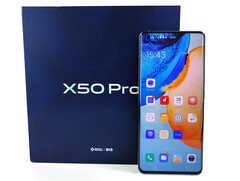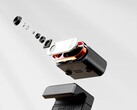The main sensor of Vivo’s midrange smartphone is a Sony IMX598 with a resolution of 48 MP and a gimbal mount. Compared to the newer IMX698 the IMX598 is more akin to an improved version of the IMX586. The main sensor’s hardware upgrade is thus not particularly impressive. In addition to some minor improvements the main lens’s aperture has been increased to f/1.6.
In return, the Chinese manufacturer found a very interesting solution to implement image stabilization for its X50 Pro. The gimbaled camera mechanism has a magnetic frame controlled by oscillator coils, and the so-called “Big Eye” camera is mounted in a double-hinged spherical suspension allowing for deviations of up to 3 degrees from both the X and Y axis. According to Vivo, his is up to 300 % more than on traditional OIS. In order to prevent stress on the cables the X50 Pro’s band was extended and designed in a double-S shape.
The most prominent benefit of this gimbal camera are its significantly improved image stabilization capabilities, particularly when recording fast-paced videos. In our test, the X50 Pro’s stabilization turned out to be excellent and even better and smoother than traditional OIS in high-end smartphones.
Find out more about the Vivo X50 Pro in our detailed and extensive review thereof.
Source(s)
Vivo X50 Pro review




























